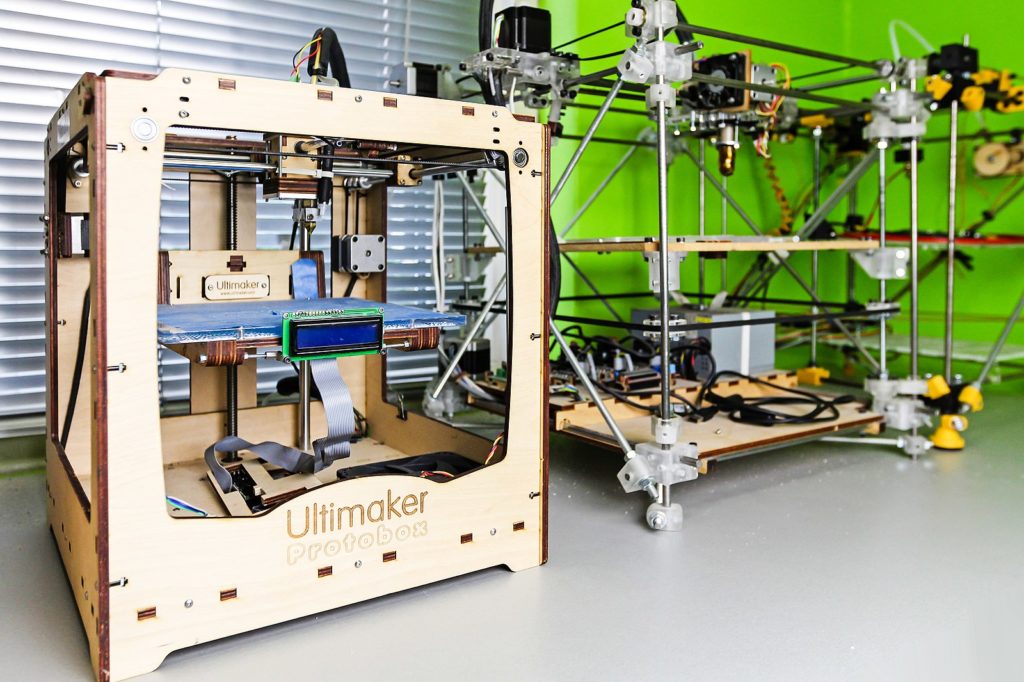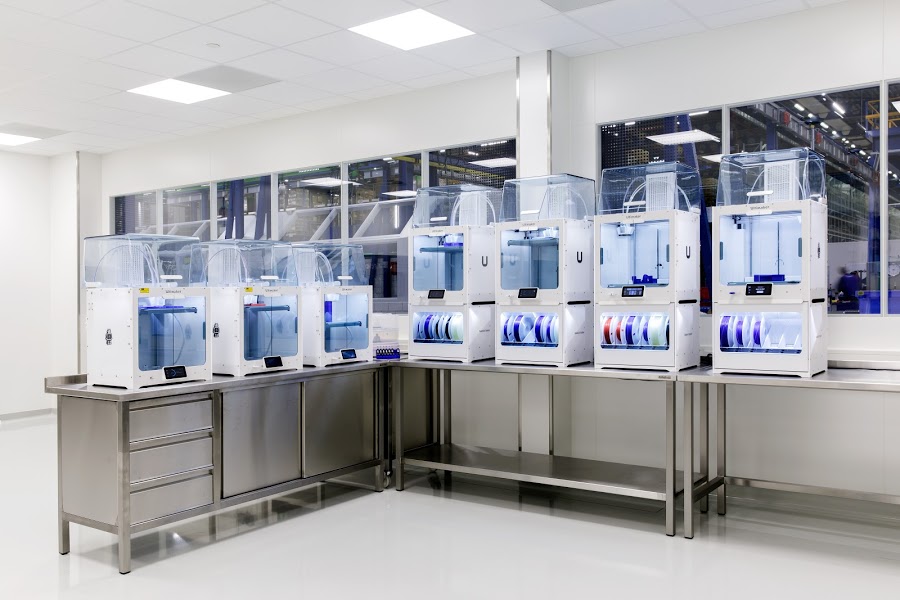Ultimaker‘s Jos Burger will be taking part in the SmarTech – Stifel AM Investment Strategies 2021 summit on September 9, 2021. Jos is a seasoned executive who was instrumental in the birth of another 3D printing company, Shapeways, years ago. Since then, he’s used his extensive experience in venturing, startups, and business management to aid Ultimaker through successive fundraising and investment rounds.
Overseeing its explosive growth from startup to scale, he was the firm’s CEO before passing the reins to Jürgen von Hollen. Now on Ultimaker’s Board, he is sure to bring wisdom as well as some characteristically frank and forthright statements to our event.
Ultimaker got its start when a trio of Dutch open source technology aficionados started giving workshops on how to build 3D printers. Martijn Elserman, Erik de Bruijn, and Siert Wijnia came from the software and business world and slowly turned their own hobby into a business. They designed and made a material extrusion kit 3D printer and sold this, locally at first. A laser cutter was working tirelessly in Martijn’s kitchen, to the general consternation of his wife.
This led to them finding an old farm building nearby in Geldermalsen. Quite quickly, other nearby farm buildings were colonized as the firm grew, manufacturing their printers in-house. Where some startups are led by a goal or vision, from the beginning Ultimaker seemed to be birthed in happenstance. From these early, chaotic days, however, a few key traits and behaviors emerged.

Ultimaker’s first product, the Protobox and the earlier RepRap style printers the team made.
Because the team started doing workshops, they responded directly to customer questions, complaints, and problems. Any issue with documentation or a part and it would be up to Ultimaker to spend time with the customer in solving it. This led to an organization that was intent on helping customers and doing so well. Good customer service, at a time when this was nonexistent at competitors really helped boost the firm. Many adherents were won over by Ultimaker customer service people working tirelessly to help them solve issues. Ultimaker’s learned behavior was to help the customer solve their problem. At other company’s the customer was the problem or they just focused on shipping boxes no matter how broken the design or printers.
Ultimaker also took customer feedback and used it to improve printers. This led to machines that were more reliable than the competition. A service-focused firm with reliable products and this contributed to Ultimaker being the natural choice for businesses looking to buy desktop fused filament fabrication printers. The founders’ workshops, therefore, laid the groundwork for a culture that would pave the way for the firm’s success in transitioning from hobbyist to professional 3D printers years later.

Ultimaker S5 systems located at the ERIKS facility.
Because the team initially made the printers themselves, an employee was hired to man the laser cutter. Another soon followed and then yet another. This eventually led to hundreds of people assembling 3D printers by hand in the Netherlands. Performing quality assurance on 3D printers is difficult because they are complex devices that entail many feedback loops between components, assembly, software, and many more factors. Many competitors struggled to get good products out the door via outsourced manufacturing companies. Quality was better because Ultimaker made its own machines. Feedback from customers to engineering and manufacturing also led to quicker improvements than elsewhere.

Hänssler’s Ultimaker S5 3D printing ESD-protected parts. Image courtesy of Ultimaker.
Happenstance, therefore, was the basis of a successful firm where the culture was driven to improve and help in order to make more reliable systems. Through an EIB loan and an investment by NPM Capital, the firm has so far taken a bit of a different path than many other startups. Money has been used to deploy an ecosystem strategy. Building upon the success of its market-leading Cura slicing software, the company now has an enterprise suite and is a platform for other software vendors looking to sell their wares. It has cooperated with larger materials businesses to qualify materials while remaining open and letting anyone use any material that they would like.

The 3D printer with its new air filtration system atop.
Machines have gotten significantly more reliable and expensive, as well. The Ultimaker 2 is now the entry level-model, which costs $2,500. Meanwhile, an S5 Pro printer bundle can set you back around $10,000. The company’s focus is obviously far away from the consumer space, as it now sells to companies worldwide.
Margins would seem to be healthy and the company has a good reputation, as do its printers. It has a strong lead in the enterprise desktop space. On the risk side, is the firm maybe pricing itself out of a lot of the market? An indirect strategy with a global network of resellers has lead to accelerated growth, but can the firm learn and know as much about its users as before? Where Ultimaker initially made printers along with its community, will it now operate in a vacuum? Can it continue to innovate or will it become too corporate? Are its printers too expensive for wide adoption in the important education market?
On the whole, those are the most important caveats to point out. The company looks very strong and is entrenching itself in the enterprise space. Ultimaker is now the default choice for any firm who wants a desktop FDM printer. Padded out by an easy-to-use software offering, this translates to a seemingly unassailable lead in desktop enterprise FFF sales. What will the firm do next? Learn the answers during the free SmarTech – Stifel AM Investment Strategies 2021 summit on September 9, 2021.
Subscribe to Our Email Newsletter
Stay up-to-date on all the latest news from the 3D printing industry and receive information and offers from third party vendors.
Print Services
Upload your 3D Models and get them printed quickly and efficiently.
You May Also Like
The Market and Industry Potential of Multi-Material 3D and 4D Printing in Additive Electronics
Additive manufacturing leverages computer-based software to create components for products by depositing either dielectric or conductive materials, layer by layer, into different geometric shapes. Since its birth in the 1980s,...
3DPOD 262: Bio-inspired Design for AM with Dhruv Bhate, Arizona State University
Dhruv Bhate is an associate professor at Arizona State University. There, he looks at structures, materials, and design. Previously, he worked at PADT as well as in the semiconductor and...
3DPOD 261: Tooling and Cooling for AM with Jason Murphy, NXC MFG
Jason Murphy´s NXC MFG (Next Chapter Manufacturing) is not a generalist service; instead, the company specializes in making tooling. Using LPBF and binder jet, the company produces some of the...
3DPOD 260: John Hart on VulcanForms, MIT, Desktop Metal and More
John Hart is a Professor at MIT; he´s also the director of the Laboratory for Manufacturing and Productivity as well as the director of the Center for Advanced Production Technologies....
































